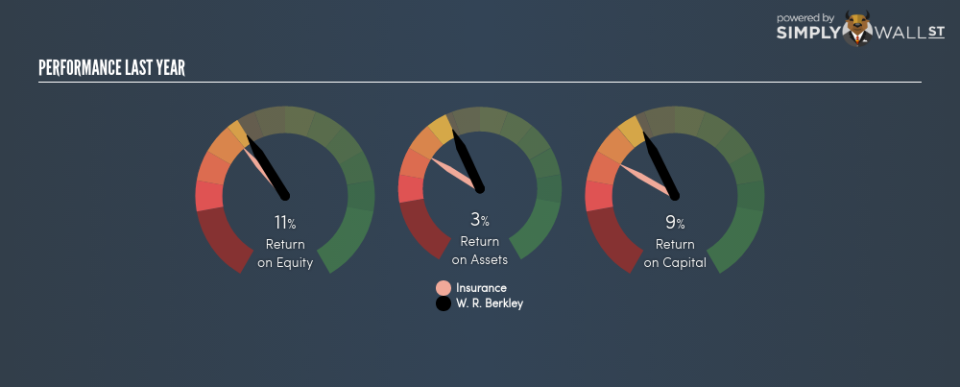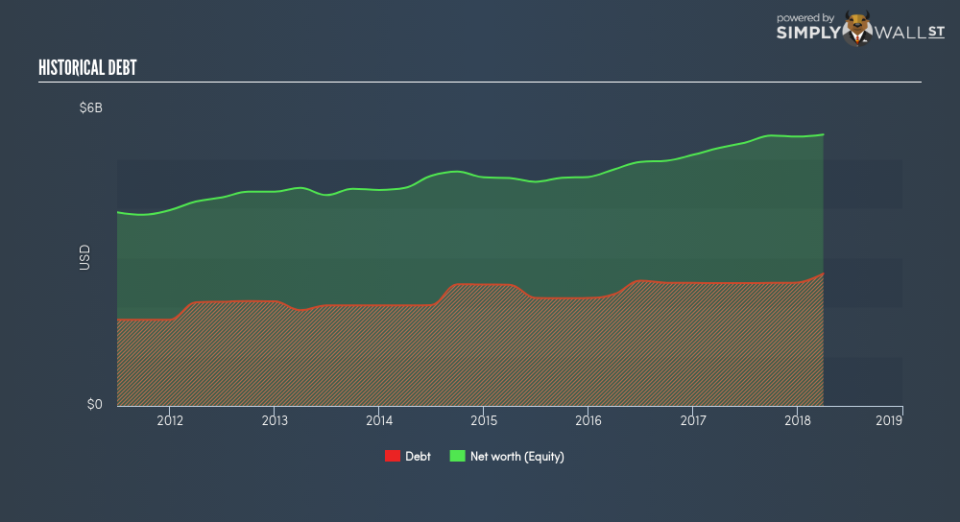Should You Expect W R Berkley Corporation (NYSE:WRB) To Continue Delivering An ROE Of 10.86%?

I am writing today to help inform people who are new to the stock market and want a simplistic look at the return on W R Berkley Corporation (NYSE:WRB) stock.
With an ROE of 10.86%, W R Berkley Corporation (NYSE:WRB) outpaced its own industry which delivered a less exciting 9.44% over the past year. While the impressive ratio tells us that WRB has made significant profits from little equity capital, ROE doesn’t tell us if WRB has borrowed debt to make this happen. We’ll take a closer look today at factors like financial leverage to determine whether WRB’s ROE is actually sustainable. See our latest analysis for W. R. Berkley
What you must know about ROE
Return on Equity (ROE) is a measure of W. R. Berkley’s profit relative to its shareholders’ equity. For example, if the company invests $1 in the form of equity, it will generate $0.11 in earnings from this. Generally speaking, a higher ROE is preferred; however, there are other factors we must also consider before making any conclusions.
Return on Equity = Net Profit ÷ Shareholders Equity
Returns are usually compared to costs to measure the efficiency of capital. W. R. Berkley’s cost of equity is 8.96%. Since W. R. Berkley’s return covers its cost in excess of 1.90%, its use of equity capital is efficient and likely to be sustainable. Simply put, W. R. Berkley pays less for its capital than what it generates in return. ROE can be split up into three useful ratios: net profit margin, asset turnover, and financial leverage. This is called the Dupont Formula:
Dupont Formula
ROE = profit margin × asset turnover × financial leverage
ROE = (annual net profit ÷ sales) × (sales ÷ assets) × (assets ÷ shareholders’ equity)
ROE = annual net profit ÷ shareholders’ equity
Basically, profit margin measures how much of revenue trickles down into earnings which illustrates how efficient the business is with its cost management. Asset turnover shows how much revenue W. R. Berkley can generate with its current asset base. Finally, financial leverage will be our main focus today. It shows how much of assets are funded by equity and can show how sustainable the company’s capital structure is. Since financial leverage can artificially inflate ROE, we need to look at how much debt W. R. Berkley currently has. Currently the debt-to-equity ratio stands at a low 48.79%, which means its above-average ROE is driven by its ability to grow its profit without a significant debt burden.
Next Steps:
ROE is one of many ratios which meaningfully dissects financial statements, which illustrates the quality of a company. W. R. Berkley’s ROE is impressive relative to the industry average and also covers its cost of equity. ROE is not likely to be inflated by excessive debt funding, giving shareholders more conviction in the sustainability of high returns. Although ROE can be a useful metric, it is only a small part of diligent research.
For W. R. Berkley, I’ve put together three fundamental factors you should look at:
Financial Health: Does it have a healthy balance sheet? Take a look at our free balance sheet analysis with six simple checks on key factors like leverage and risk.
Valuation: What is W. R. Berkley worth today? Is the stock undervalued, even when its growth outlook is factored into its intrinsic value? The intrinsic value infographic in our free research report helps visualize whether W. R. Berkley is currently mispriced by the market.
Other High-Growth Alternatives : Are there other high-growth stocks you could be holding instead of W. R. Berkley? Explore our interactive list of stocks with large growth potential to get an idea of what else is out there you may be missing!
To help readers see pass the short term volatility of the financial market, we aim to bring you a long-term focused research analysis purely driven by fundamental data. Note that our analysis does not factor in the latest price sensitive company announcements.
The author is an independent contributor and at the time of publication had no position in the stocks mentioned.


